Sequoia Scavullo, Me and my mom, 2025 oil on canvas 160 x 130 cm, unique Courtesy of the artist and Sans titre, ParisImage © Aurélien Mole
After investing in some highly unconventional venues, (sans titre) chose the Marais district on rue Michel-le-Comte, right in the heart of Paris’s creative ecosystem, as its base in 2022.
Marie Madec, founder and director, traces the gallery’s journey from its very first exhibitions held in her apartment back in 2016 to reaching the much-coveted milestone of being selected for Art Basel.
After initially showing in the emerging galleries sector, this year the gallery is featured in the main section of Art Basel Paris, a move that, as Marie Madec points out, comes with greater creative freedom. The artists presented, all of whom are making waves on the international scene, including Agnes Scherer, embody what she describes as “a kind of dichotomy between strength and fragility.”
Marie also reflects on her role within the art-o-rama committee, a fair that has played a key part in shaping the gallery’s DNA. She shares her perspective on the profession and the ongoing scouting work the gallery conducts, particularly around newly graduated artists in France and worldwide.
(sans titre) also stands out as one of the first galleries to boldly enter the Chinese market, a move that appears to have paid off.
Marie answered my questions.
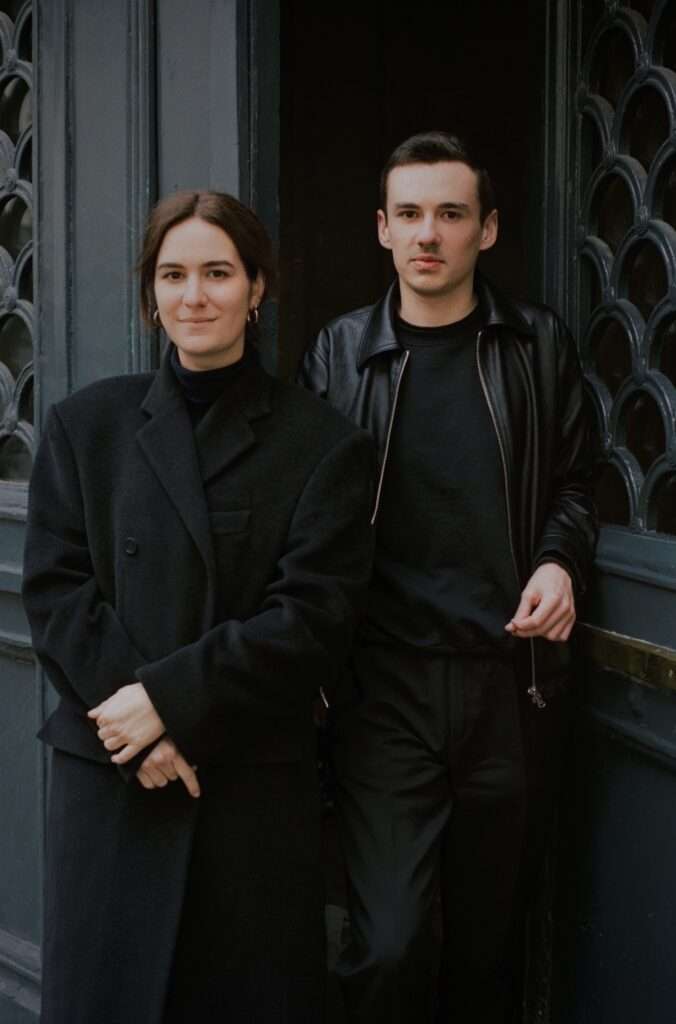
Courtesy of Sans titre, Paris
Image © Jean du Sartel
What is the DNA of (sans titre) gallery ?
(sans titre) is a contemporary art gallery that gradually embraced a more traditional model of artist representation after operating for several years as a nomadic, project-space initiative. In its early days, there wasn’t a clear commercial ambition behind the project. Many of the defining markers of what a gallery is today : a permanent address, a roster of represented artists, the production of artworks, were not part of our original identity. That has evolved over time.
Our first fixed location was in Paris’s 10th arrondissement, and it played a crucial role in shaping both the aesthetic and conceptual identity of the gallery. It faced the stage door of the Théâtre Antoine, and that proximity to the world of theatre, scenography, and ultimately holistic installation deeply influenced our early exhibitions. The space itself, tucked away in a courtyard, formerly a costume designer’s office had a domestic feel that significantly shaped the gallery’s DNA.
For the past three years, we’ve been based in the Marais, on rue Michel-le-Comte, just a stone’s throw from the Centre Pompidou. That proximity was a real asset, even if the museum is now closing for several years of renovation, as you may know. Still, the location remains a major advantage in terms of foot traffic and visibility.
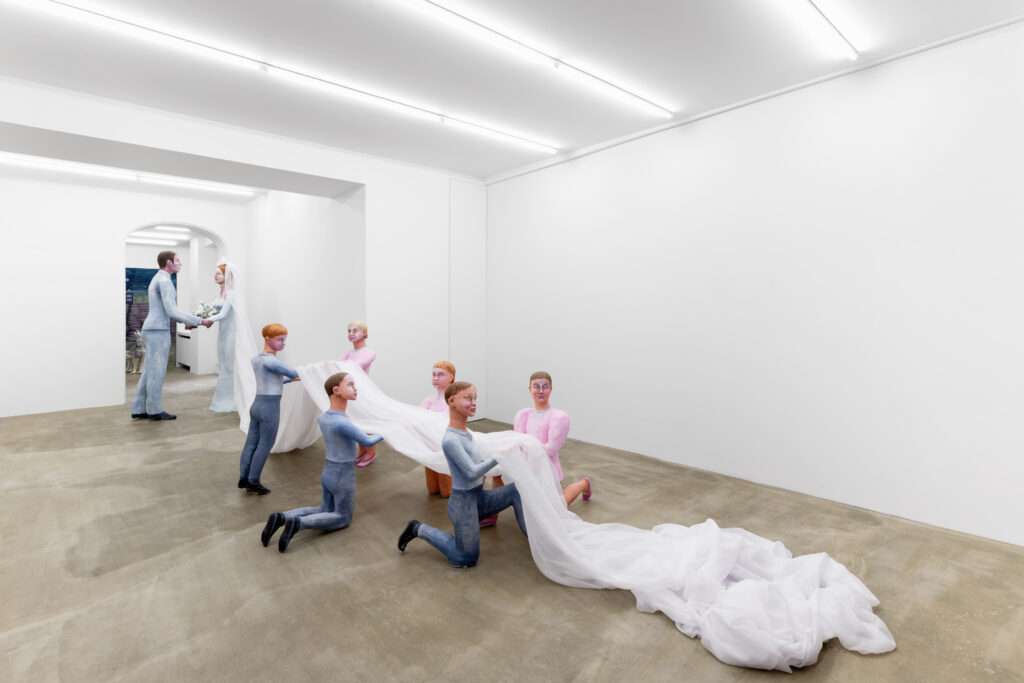
Exhibition view, A thousand times yes, 2022, Sans titre, ParisCourtesy of the artist and Sans titre, ParisImage © Aurélien Mole
You’re among the French galleries selected for Art Basel, which is worth highlighting. What’s the concept for your stand for Paris 2025 edition ?
This year, we’re presenting a group show. Since joining the main sector two years ago, after initially being part of the emerging galleries section, we’ve had more freedom in shaping our proposals. We no longer do solo shows at the fair, although we might return to that format in the future. But that wasn’t our choice this year.
We’re showing works by five artists from our program, all of whom are currently making significant moves on the international scene. For example, Aysha E Arar, who’s the subject of a major institutional exhibition at CC Strombeek opening on October 31. We’re also showing work by Sequoia Scavullo, who just received the Matsutani Prize (awarded by the Schoen Fund) at the occasion of Asia Now, an important milestone.
We’re also presenting a painting by Agnes Scherer, whose solo show just opened at the gallery. There’s a dialogue between that exhibition and the piece at the fair. Agnes has two major institutional shows coming up next year. One will be at the Kunstverein Salzburg—an especially meaningful venue, as it’s where she lives and works, and where she teaches at the Mozarteum University, shaping the next generation of Salzburg-based artists. A few months later, she’ll have a show at the Nicoletta Fiorucci Foundation in London. There’s a lot to be excited about.
The artists we’ve chosen to present are connected through a shared exploration of a kind of dichotomy between strength and fragility. The stand will feature works made from contrasting materials : bronze and marble alongside paper and fabric. Thematically, we’re showcasing representations of the body in all its dimensions: majestic, powerful figures that question dominant narratives, and conversely, vulnerable, damaged, or diminished bodies.
This back-and-forth, between force and delicacy, between socially constructed notions of power and weakness, is at the heart of our proposal for Art Basel Paris this year.
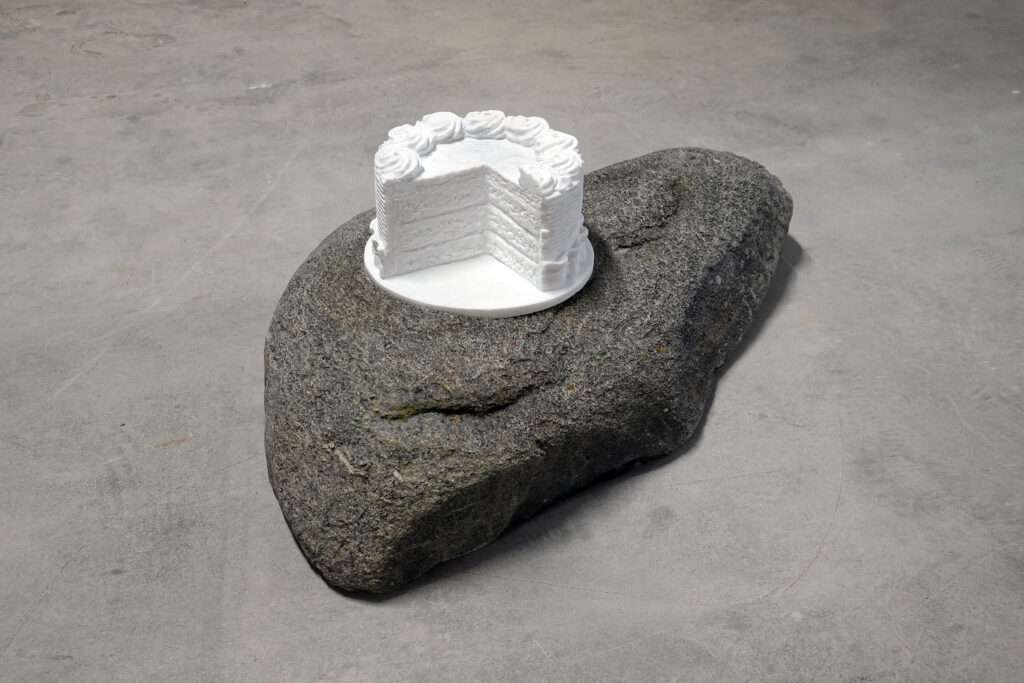
Hamish Pearch, 1½ cups all-purpose flour ; 12 cups of truth ; 2 handfuls of carbs and fats ; 5 people you love ; 1 square of European mantle ; 1 cup of sweetener ; 2 cans of ever tried ; 2 cloves of days and day, 2025Hand-carved marble, river stone30 x 80 x 50 cm, uniqueCourtesy of the artist and Sans titre, Paris
And in your view, what made Art Basel notice you and select your gallery?
You’d better to ask them!
If we look at the timeline, the first time we applied for the emerging sector, it was with artist Jessy Razafimandimby, who at the time had strong visibility, not just in the market, but also institutionally, with a show at the Musée d’Art et d’Histoire in Geneva, which isn’t always the case. That combination likely caught Art Basel’s attention.
Jessy also conceived a bold and ambitious proposal specifically for the fair. I’m not sure if you saw it, a monumental gateway installation referencing colonial memory. It was certainly a striking piece.
I think the Art Basel committee is probably quite attuned to projects that are both visually impactful and technically demanding, proposals that stand out and show a certain level of ambition. That likely played a role in our selection.
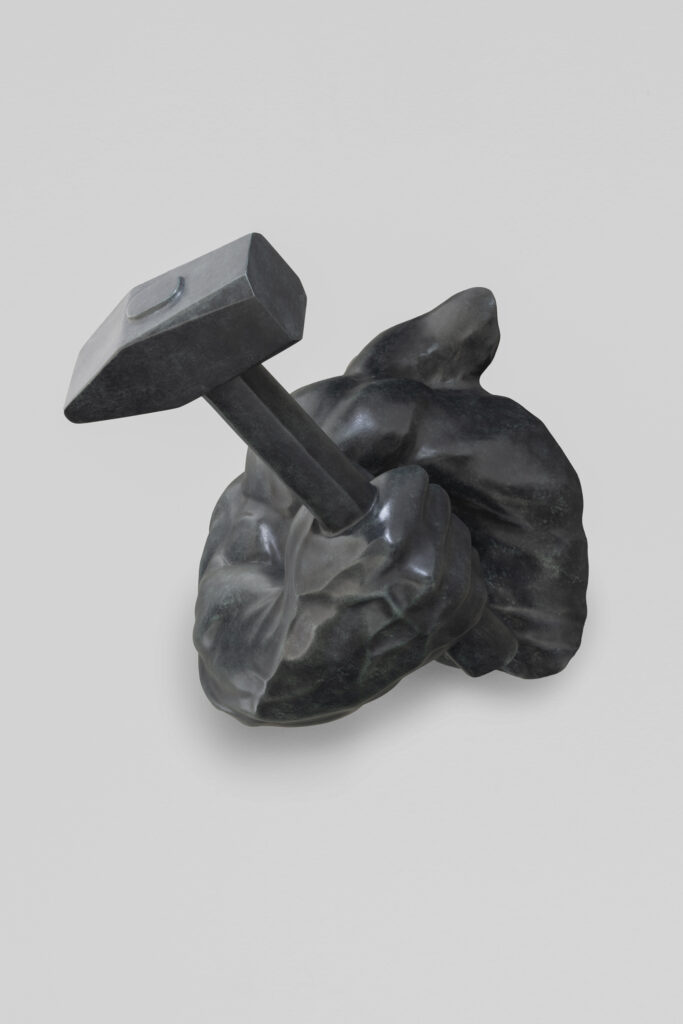
Zuzanna Czebatul, Andrea, 2025bronze63.7 x 44.6 x 49.9 cm, unique in a seriesCourtesy of the artist and Sans titre, ParisImage © Andrea Rossetti
How do you find and source the artists you work with? Does it happen through a kind of community around you?
It’s a question we often discuss with the artists we already work with. Interestingly, only two of the artists in our program are currently based in France, both in Paris. So, whenever I travel to a city where one of our artists is from or has lived, I always ask if they have suggestions—people I should visit or keep an eye on. It’s a fairly intuitive process.
We mostly work with emerging artists, many of whom are in their early post-graduate years. That’s why we spend a lot of time in art schools, starting with the École des Beaux-Arts de Paris, which is just a 12-minute walk from the gallery, but also across Europe. We visit schools during graduation shows, open studios, and other public events. We also follow schools on social media and through their newsletters to stay up to date.
And of course, sometimes things happen by chance, through unexpected encounters. I do believe that instinct plays a big role in what we do.
Let’s talk about your experience with art-o-rama and your role on the committee.
I served on the art-o-rama committee for four years. For us, art-o-rama has always been a meaningful fair, often a platform where we could introduce new artists for the first time. But it’s also been important from a relational standpoint, a moment to reconnect with people we’ve been working with for years.
Being a committee member taught me a great deal. It allowed me to form deep connections with fellow gallerists, and I truly loved the experience. This year marked the end of that chapter. I’ve officially stepped down! So of course, the takeaway is a very positive one. It feels like the conclusion of a beautiful story we’ve shared with the fair, where we exhibited for what I believe was seven years. That kind of longevity is quite rare at art-o-rama, which is generally seen as a launchpad for younger galleries.
Staying involved for so long gave us the chance to witness several generations of young galleries come through, and it helped foster strong intergenerational ties within the scene.
It’s also always been a real pleasure to connect with the Marseille audience, which we know well, we’ve organized several events in the city beyond the fair. A few years ago, I was personally involved in a project space there called Belsunce Projects, which made the connection to Marseille even more meaningful.
How do you perceive your profession today ? How has it evolved ? Did the lockdown have an impact?
When it comes to the lockdown, the gallery had only just opened in its current form, barely six months before, so I don’t really have a « before and after » to compare. In many ways, what others called the « new normal » was simply ournormal from the start.
That said, it was actually during that time that the gallery began gaining visibility, largely because we were very active online. I helped organize a digital fair called NOT CANCELLED, which brought together many Paris-based galleries. So, in a way, and paradoxically, the lockdown became our launchpad. We had strong online visibility, lots of energy, and plenty of ideas. On top of that, we had almost no fixed costs, which gave us a certain agility.
So I wouldn’t say there was a real « before » and « after » for us. But I do believe the art world bubble that we all benefited from this sort of insatiable appetite for contemporary art actually began during the lockdown.
In today’s particularly tense climate, how do you see yourselves moving forward ?
I’m not sure I have a definitive answer to that question. What we’re trying to do is stay grounded, to continue presenting high-quality exhibitions, and not compromise on artistic integrity in the face of economic or contextual difficulties. We make a conscious effort not to default to easier, more commercial options, this is something we reflect on daily.
We’re also a relatively small structure, which means our fixed costs are quite manageable. And we’re fortunate to have a base of collectors who are truly passionate, not driven by speculative motivations. In fact, I don’t think our collector base has changed much in recent months. It has remained quite stable, and that in itself provides a certain kind of support and reassurance.
And your international profile must also contribute to the gallery’s impact and expansion
Absolutely. Most of the artists we represent are not French, and few are actually based in France. That allows us to reach a broader audience, particularly in the regions those artists come from.
Early on, we also made the choice to participate in international fairs, including in China, at a time when few emerging galleries were exploring that market. So yes, cultivating a strong international outlook has always been a key part of our approach.
Last question, regarding your personal journey : When did you decide to fully commit to art? Was there a triggering moment or decisive encounters ?
It happened somewhat by chance, I have to say. I started organizing exhibitions quite empirically, initially in my own living room, at a time when I was in a kind of academic limbo—not really sure what to do next. I invited several friends who were young artists struggling with visibility to take part in this very spontaneous first exhibition, with no real vision or intention for it to become a career.
As I mentioned earlier, the commercial drive behind the project was extremely limited. We sold works, but mainly to finance the next exhibition. There was no financial pressure or professional ambition on my part at that stage.
I gradually got caught up in it and realized that I preferred being in close contact with artists of my generation rather than sitting in a library. Originally, my project was more focused on research and teaching—even though, as we know, there are many called and few chosen.
The idea of the gallery grew organically through exchanges with artists, exhibition projects, and the stories we wanted to tell. A program is like a book, and exhibitions form the chapters of a narrative we share with our audience who may be more or less receptive to certain stories.
So, we try to maintain variety: moments of action, plenty of poetry, and a political edge, while always telling a story.
The gallery evolved quite organically from my living room to a nomadic setup. But constantly changing venues meant working under pressure, which was far from ideal for the artists, who couldn’t anticipate or fully develop their creativity. They found themselves confined to adapting to different spaces, often at the last minute.
Financially, this model was unsustainable, especially with collectors who didn’t really take us seriously.
To better support artists in producing works, in institutional projects, and in key stages of their careers and to broaden our collector base, we decided in 2019 to open a proper gallery with a fixed address and regular opening hours.
So, for me, there was no single defining moment or decisive encounter. I had no gallery experience before starting to organize exhibitions. Ultimately, (sans titre) was built somewhat on the margins of the gallery world, before finally joining it.
Practical Infos :
Art Basel Paris
October 23-26, 2025
Grand Palais
Day Ticket €45
Reduced Ticket € 30
Opening Hours
VIP days (by invitation only)
Wednesday, October 22, 10am to 8pm, First Choice VIP
Wednesday, October 22, 4pm to 8pm, Preview VIP
Thursday, October 23, 11am to 2pm, First Choice, Preview and One-Day VIP
Vernissage day (access with a Vernissage ticket or invitation)
Thursday, October 23, 2pm to 8pm
Public days (access with a ticket or invitation)
Friday, October 24, 11am to 7pm
Saturday, October 25, 11am to 7pm
Sunday, October 26, 11am to 7pm
https://www.artbasel.com/paris
ASIA NOW
Matsutani Prize : Sequoia Scavullo
Awarded by the SHŌEN Fund, the Matsutani Prize grants €15,000 to an artist based in France, with 5 to 25 years of career, selected by a jury of artists, curators, and collectors.
Currently at the gallery :
« Stargazing Masks »
a solo show by Agnes Scherer
(sans titre)
13 rue Michel Le Comte
75003 Paris, France
https://sanstitre.gallery/exhibitions/agnes-scherer-stargazing-masks-paris

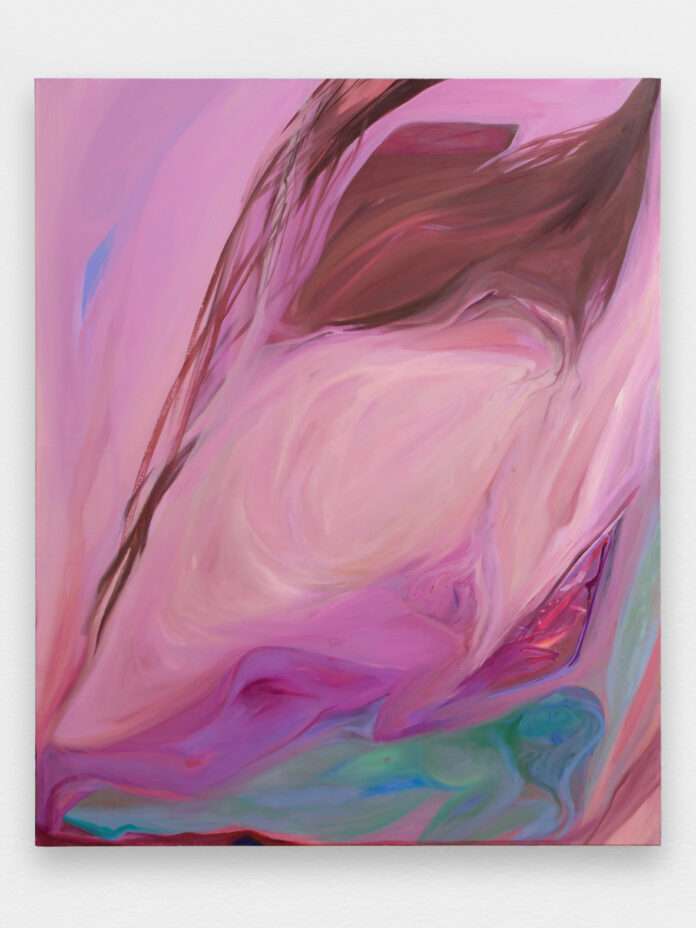

![Rencontre Evelyne Deret, ART [ ] COLLECTOR- « Des Collectionneurs invitent un Artiste »](https://fomo-vox.com/wp-content/uploads/2025/12/DSC7937-218x150.jpg)
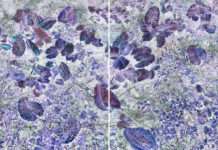

![Rencontre Evelyne Deret, ART [ ] COLLECTOR- « Des Collectionneurs invitent un Artiste »](https://fomo-vox.com/wp-content/uploads/2025/12/DSC7937-100x70.jpg)

